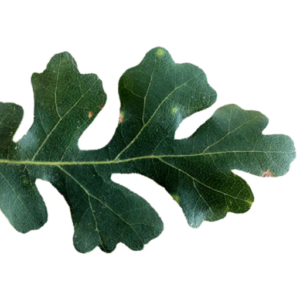Seed dispersal is the critical step in establishing new progeny within plant populations. Along with pollen movement, seed dispersal also determines the genetic structure of plant populations. Seed dispersal has a greater relative impact on creating genetic structure than does pollen flow because:
- 1. Seeds carry two alleles per locus while pollen grains carry one; and
- 2. Seeds are the ultimate carriers of pollen-borne alleles.
It can be difficult to follow seed movement. Unlike pollen, which must arrive at a stigma to be viable, seeds can go anywhere and are quite difficult to find. In addition, it is statistically difficult to describe seed movement because the dispersed seedling has a genotype determined by both the mother and the father. In our lab, we are taking advantage of a recently developed technique based upon the isolation of DNA from maternally-derived tissues found within the seed; in oaks, this tissue is the hard outer pericarp. The genotype of these tissues directly matches that of the maternal tree. Using seedling genotypes alone, the assignment of maternal and paternal parents is often made with considerable uncertainty.
We are developing novel statistical methods to structure within the outcome of seed dispersal, to augment source-based methods such as the estimation of dispersal kernels which emphasize source-based patterns of dispersed seeds. Building off of earlier work for estimating the Probability of Maternal Identity (PMI; Grivet et al. 2005), we have begun to develop statistical methods for characterizing the diversity of seed sources found within seed dispersal sites in terms of alpha, beta and gamma biodiversity familiar from ecology. The PMI method is implemented within the pmi set of R-language functions, available on the Sork lab Software page.
We are also developing novel statistical methods to improve the resolution of parental assignment which combine genotype data from seedlings and maternally-derived tissues in the seed. This method is implemented within the whyp (WHo’s Your Parent) open-source R-language package, available on the Sork lab Software page.
Several of our seed dispersal projects involve acorns from the California valley oak (Quercus lobata) and Coast live oak (Q. agrifolia). We are examining the genetic consequences of dispersal by comparing the genetic structure of dispersed and undispersed seeds. We have also been using the genetic structure of seeds found within granaries of the acorn woodpecker (Melanerpus formicivorus) to understand the foraging and social behavior of this territorial, cooperatively-breeding bird.
Some papers on seed dispersal from the Sork lab
Scofield, D. G., V. R. Alfaro, V. L. Sork, D. Grivet, E. Martinez, J. Papp, A. R. Pluess, and P. E. Smouse. 2010. Foraging patterns of acorn woodpeckers (Melanerpes formicivorus) on valley oak (Quercus lobata Née) in two California oak savanna-woodlands. Accepted, Oecologia.
Scofield, D. G., V. L. Sork, and P. E. Smouse. 2010. Influence of acorn woodpecker social behaviour on transport of coast live oak (Quercus agrifolia) acorns in a southern California oak savanna. Journal Of Ecology 98:561-572.
Karubian, J., V. L. Sork, T. Roorda, R. Durães, and T. B. Smith. 2010. Destination-based seed dispersal homogenizes genetic structure of a tropical palm. Molecular Ecology 19:1745-1753.
Grivet, D., J. J. Robledo-Arnuncio, P. E. Smouse, and V. L. Sork. 2009. Relative contribution of contemporary pollen and seed dispersal to the effective parental size of seedling population of California valley oak (Quercus lobata, Née). Molecular Ecology 18:3967-3979.
Wang, B. C., V. L. Sork, M. T. Leong, and T. B. Smith. 2007. Hunting of mammals reduces seed removal and dispersal of the Afrotropical treeAntrocaryon klaineanum (Anacardiaceae). Biotropica 39:340-347.
Grivet, D., P. E. Smouse, and V. L. Sork. 2005. A novel approach to an old problem: tracking dispersed seeds. Molecular Ecology 14:3585-3595.
Kelly, D., and V. L. Sork. 2002. Mast seeding in perennial plants: Why, how, where? Annual Review of Ecology and Systematics 33:427-447.
